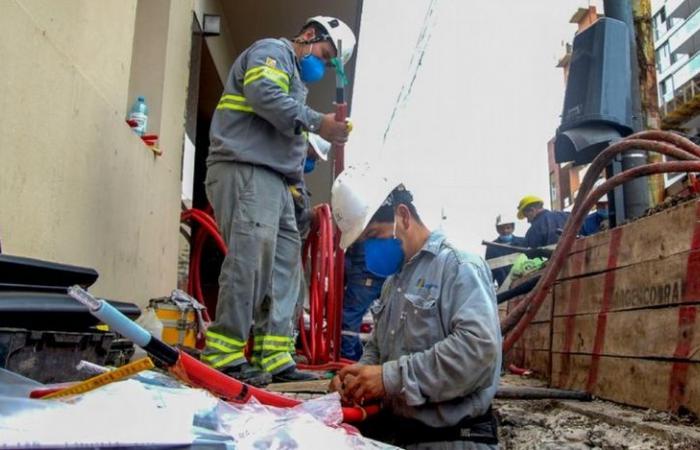With the deep recession that the country is going through, the drop in consumption and the loss of purchasing power, now the central concern is reflected in employment, according to opinion polls.
The sharp drop in consumption, one of the reasons for the drop in inflation, caused activity to fall and the labor market to crack. Companies adjust their supply to the level of demand and concern grows about the rise in unemployment in the second part of the year.
This is reflected in the Employment Expectations Survey corresponding to the third quarter of 2024, carried out by Manpower and from which it appears that hiring expectations have remained low for a year, and will remain so for at least the third quarter of this year. anus.
The data was collected after surveying more than 700 employers in the country, who reported a Seasonally Adjusted Net Employment Expectation (ENE) of +3%, demonstrating an increase of 2 percentage points in the quarterly comparison and no changes in the year-on-year comparison.
The survey maintains that 36% of employers plan to increase their staffing, 33% reduce them, 28% do not expect to make changes and the remaining 3% do not know if they will make them during the surveyed period.
/Home Embedded Code/
/End Embedded Code/
“Compared to other countries in the region, hiring expectations in Argentina remain stagnant. For a year now, our country has been losing a golden opportunity to attract investments that businessmen from other countries are attracting,” said Luis Guastini. , president of ManpowerGroup Argentina and director of Talent Solutions for Latin America, and always following the report of journalist Juan Manuel Rodríguez.
Along these lines, Guastini added: “The decisive factor for a company to invest in Argentina is not necessarily based on labor costs, but on legal security. It is very difficult to attract investments when the legislation is not clear and there are high levels of conflict. labor”.
Specialists justify this in two phenomena, one the one described above about adjusting supply to the new level of demand, and the other due to the increase in the economically active population. In this framework, the phenomenon of the poor employee has begun to be seen frequently, he has work but it is not enough; Therefore, another person in the family group must go out to look for work, which by statistical definition increases unemployment.
According to a report by Epyca, the consulting firm of economist Martín Kalos, “all branches of activity reduced their jobs. Mainly, in line with the drop in their level of activity, for example construction decreased its employment by -2.4 “% month-on-month and -13.5% year-on-year. If public and unregistered private employment were taken into account, the fall would be substantially greater both in this sector and in general.”
Based on SIPA data for the last quarter of 2023, the result is that the drop in employment in the first 3 months of 2024 represents around 58 thousand jobs, of which around 11 thousand would be small and medium-sized. companies.
/Home Embedded Code/
/End Embedded Code/
Comparisons by sector
In five of the nine economic activities surveyed, employers expect to increase their payrolls during the third quarter of 2024. The Health and Life Sciences sector leads this trend, with an ENE of +29%, followed by Information Technology, with +20% and Finance and Real Estate, with +17%. While those who report the weakest hiring expectations are Consumer Goods and Services, with an ENE of -1%, followed by Transportation, Logistics and Automotive and Industries and Materials, which report zero hiring expectations.
Compared to the second quarter of 2024, hiring expectations strengthen in five of the nine industrial sectors surveyed. The largest increase is reported by Health and Life Sciences, revealing an increase of 43 percentage points, followed by Energy and Public Services, with a growth of 15 points.
/Home Embedded Code/
/End Embedded Code/
Regional comparisons
In five of the six regions of the country surveyed, employers expect to increase their payrolls during the third quarter of 2024. The Cuyo region leads this trend, with an ENE of +15%, followed by the Argentine Northeast (NEA), with a ENE +12%; while La Pampeana shows the weakest hiring expectations, revealing an ENE of -4%.
Compared to the period surveyed previously, survey results indicate that hiring intentions are increasing in five of the six regions. Patagonia leads this trend with an increase of 20 percentage points, followed by Cuyo, with an improvement of 15 points. On the other hand, the Pampas region shows a decrease of 3 percentage points.






